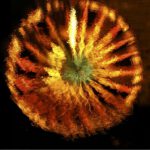Like all good photographers Alan Babbitt sees what’s invisible to most of us.
With a steady hand and a willingness to go almost anywhere for a good shot, Alan spent decades turning his lens on people and places to create images he thought would draw the viewer in and tell a story.
“I’d call it street photography,” he said. “I wanted to document what’s around me.”
But when his steady hand began to fail him in 2003, he thought he’d lost what defined him as a photographer.
“First my thumb started twitching,” he said.
Parkinson’s Photographer
Then the tremors became more pronounced. After seeing a neurologist, he got a diagnosis that shook him to his core – Alan learned he had Parkinson’s disease.
“It was devastating,” he said.
He was a still photographer, he liked to say, but he couldn’t keep his camera from shaking. Alan drifted into depression, and for a time stopped taking photos all together.
- Copyright Alan Babbitt
- Copyright Alan Babbitt
- Copyright Alan Babbitt
- Copyright Alan Babbitt
The difficult news was compounded by a side effect of the disease. Parkinson’s causes chemical changes in the brain that can lead to depression. Ironically when Alan began taking an anti-depressant, it compounded his problem, one of the drug’s side effects included tremors.
“It was hard,” he said.
It felt like the passion of his life – the thing Alan had been doing since he was a kid with his first camera, a Kodak Brownie Hawkeye – was slipping away.
Seeing Anew
And then Alan saw something that no one else could see.
“It was almost by accident,” he said.
In Las Vegas, he went out one evening with his camera. He was taking photos in the low light, frustrated by every image being out-of-focus.
“But you know the beauty of digital cameras is you can see things instantly,” Alan said.
As he looked at the photos on the camera, he was suddenly struck by the blurry images his shaky hands were taking. It was one of those a-ha moments.
Unstill Photography
He decided to push it one step further, clicking off the flash, slowing the shutter speed down, and turning his small point-and-shoot digital camera back at the neon lit streets of Las Vegas. Instead of trying to deny what was happening to him, Alan made his Parkinson’s part of how he made his images.
“After a couple years of fighting my tremor and trying to work around it, I had the notion to just let go and let it do its thing,” Alan said. “The camera quickly showed me I was onto something.”
Just as he’d always done as a good photographer, Alan captured what was invisible to most of us. And thus the creation of what he now calls his “Un-Still Photography.” Instead of trying to steady his hand, the tremors were part of his creative process, generating the swirls and whirls of light that offered unique and arresting images of the world around him.
New Possibilities
His epiphany in Las Vegas energized him and he folded that feeling into how the diagnosis itself had changed him. His priorities changed, so did his goals and his notion of what he wanted out of life.
“The world and everything in it became new and fresh and the possibilities were endless,” Alan said.
From that moment in Las Vegas, Alan has begun to push his “Un-Still Photography” into other unexpected arenas including sports photography, particularly baseball. The images he captures including the swirl of a batter’s swing, or the buzzing color of the crowds in the stadium, you can’t see in most sports images.
For Alan, who joined 23andMe’s Parkinson’s research community almost six years ago, his condition has become something that he is embracing.
“It’s turning a negative into a positive,” he said.
That’s what also motivated him to join 23andMe and contribute to research.
“If they can learn something from me about this disease that can help someone else then I’m all for it,” he said.
Check out some of Alan’s images on his website.



